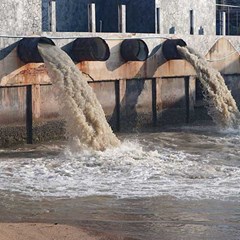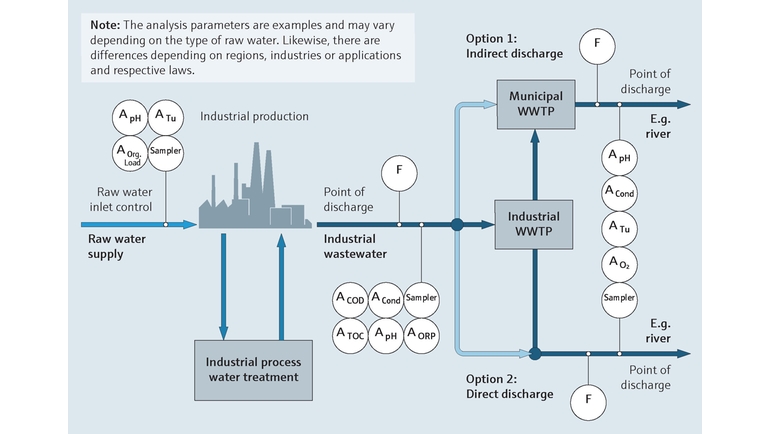Industrial Waste Water Treatment-- Enhance Effectiveness with Custom-made Water Treatment Solutions
Wiki Article
Key Methods in Industrial Waste Water Treatment Processes
The therapy of commercial wastewater is a critical aspect of ecological administration, involving an array of strategies made to alleviate the impact of impurities. Improvements in technologies such as membrane filtering and progressed oxidation processes offer innovative services for improving treatment effectiveness.Physical Treatment Techniques
Exactly how successfully can physical therapy approaches attend to the intricacies of commercial wastewater? Physical treatment techniques play a critical function in the preliminary stages of wastewater management, concentrating largely on the elimination of solids and big particulates. Methods such as filtration, flotation, and sedimentation are essential for reducing the focus of put on hold solids, therefore improving the effectiveness of subsequent therapy procedures.Sedimentation entails the gravitational settling of solids, enabling for the splitting up of heavier products from the wastewater. This method is particularly effective in clearing up water prior to organic or chemical treatments.
Furthermore, flotation techniques, which utilize air bubbles to raise suspended solids to the surface area for removal, work in treating wastewater with high focus of fats, oils, and oils. In general, physical therapy methods offer as a crucial very first step in the detailed monitoring of industrial wastewater, making sure that the tons on subsequent therapy stages is lessened and boosting overall treatment efficiency.
Chemical Therapy Techniques
While physical therapy techniques lay the groundwork for reliable wastewater administration, chemical therapy methods are important for resolving the a lot more complex pollutants frequently located in industrial effluents. These approaches use numerous chemical agents to speed up, neutralize, or oxidize dangerous substances, making sure a more detailed removal of contaminants.
One usual technique is coagulation and flocculation, where chemical coagulants such as aluminum sulfate or ferric chloride are included in advertise the gathering of suspended bits. This procedure enhances solid-liquid separation, lowering turbidity and improving water high quality. In addition, neutralization processes are utilized to readjust the pH of wastewater, utilizing acids or bases to counteract acidic or alkaline streams, specifically.
Oxidation-reduction reactions play a vital role in degrading organic pollutants and virus. Chemical oxidants like ozone, hydrogen, or chlorine peroxide are made use of to break down complex organic compounds, making them much less unsafe or more naturally degradable. Advanced oxidation processes (AOPs) integrate several oxidation strategies to enhance pollutant removal efficiency.
Biological Treatment Processes
The efficiency of wastewater treatment is substantially improved by biological treatment processes, which harness the natural metabolic tasks of microbes to decay natural issue and get rid of toxins. Industrial Waste Water Treatment. These procedures mostly include cardiovascular and anaerobic digestion, each customized for details sorts of wastewaterCardiovascular treatment processes make use of oxygen to sustain microbial growth, promoting the breakdown of natural toxins into carbon dioxide and water. Usual approaches include activated sludge systems, where oygenation containers help with the mixing of wastewater with microbes, and dripping filters, which encourage biofilm development on media surface areas.
Alternatively, anaerobic therapy procedures take place in the lack of oxygen, utilizing anaerobic microorganisms to disintegrate organic issue, causing biogas manufacturing, an eco-friendly energy source. Anaerobic digesters are typically employed in commercial settings for this purpose, effectively decreasing the quantity of sludge while producing valuable biogas.
The choice of a biological treatment approach depends upon wastewater features, treatment goals, and regulatory requirements. The integration of organic processes in wastewater therapy not only boosts contaminant elimination effectiveness but additionally promotes sustainability by decreasing chemical usage and sustaining source healing.
Advanced Oxidation Processes

Typical AOP techniques include Fenton's reagent, photocatalysis, and ozonation. Fenton's reagent, a mix of hydrogen peroxide and ferrous iron, catalyzes the formation of hydroxyl radicals, making it efficient for dealing with wastewater having phenolic compounds and other stubborn materials.
AOPs provide a number of benefits, consisting of decreased sludge manufacturing and the ability to treat wastewater with high concentrations of natural contaminants. The implementation of AOPs requires careful consideration of operational parameters and cost-effectiveness, making sure that these sophisticated techniques are appropriately incorporated right into click to read existing wastewater therapy systems.
Membrane Layer Purification Technologies

Microfiltration is effective for eliminating put on hold solids and microorganisms, while ultrafiltration targets smaller sized organic molecules and infections. Nanofiltration links the void between ultrafiltration and reverse osmosis, successfully getting rid of divalent ions and organic compounds. Reverse osmosis offers the highest degree of filtration, used mostly for desalination and getting rid of mono-valent ions.
Membrane layer modern technologies offer various benefits, consisting official statement of low power consumption compared to typical therapy approaches, modular style for scalability, and the potential for water recuperation and reuse. Nevertheless, challenges such as membrane fouling and the need for regular upkeep have to be addressed to make sure system effectiveness. Overall, membrane layer filtering modern technologies stand for an important element of modern commercial wastewater therapy approaches, promoting sustainability and source conservation in water management.
Verdict
In verdict, industrial wastewater treatment uses a diverse variety of techniques, including physical, chemical, organic, and advanced techniques. Proceeded developments in these techniques will even more boost the efficiency and efficiency of wastewater therapy processes in industrial setups.The therapy of commercial wastewater is an important aspect of environmental monitoring, including a range of visit their website strategies designed to reduce the effect of impurities.How successfully can physical therapy methods deal with the intricacies of commercial wastewater?Advanced oxidation procedures (AOPs) stand for a cutting-edge method in industrial wastewater therapy, created to properly degrade organic pollutants that are typically resistant to traditional therapy techniques (Industrial Waste Water Treatment).In verdict, commercial wastewater therapy uses a varied variety of strategies, consisting of physical, chemical, organic, and progressed techniques. Proceeded improvements in these methods will certainly additionally enhance the efficiency and effectiveness of wastewater therapy processes in industrial settings
Report this wiki page